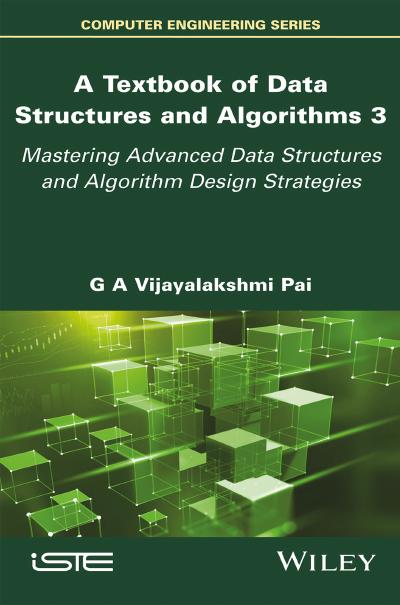
English | 2023 | ISBN: 978-1786308924 | 368 Pages | PDF, EPUB | 32 MB
Efficient problem solving using computers, irrespective of the discipline or application, calls for the design of efficient algorithms. The inclusion of appropriate data structures is of critical importance to the design of efficient algorithms. In other words, good algorithm design must go hand in hand with appropriate data structures for an efficient program design to solve a problem.
Data structures and algorithms is a fundamental course in computer science, which most undergraduate and graduate programs in computer science and other allied disciplines in science and engineering offer during the early stages of the respective programs, either as a core or as an elective course. The course enables students to have a much-needed foundation for efficient programming, leading to better problem solving in their respective disciplines.
Most of the well-known text books/monographs on this subject have discussed the concepts in relation to a programming language – beginning with Pascal and spanning a spectrum of them such as C, C++, C#, Java, Python and so on, essentially calling for ample knowledge of the language, before one proceeds to try and understand the data structure. There does remain a justification in this. The implementation of data structures in the specific programming language need to be demonstrated or the algorithms pertaining to the data structures concerned need a convenient medium of presentation and when this is the case, why not a programming language?
Again, while some authors have insisted on using their books for an advanced level course, there are some who insist on a working knowledge of the specific programming language as a prerequisite to using the book. However, in the case of a core course, as it is in most academic programs, it is not uncommon for a novice or a sophomore to be bewildered by the “miles of code” that demonstrate or explain a data structure, rendering the subject difficult to comprehend. In fact, the efforts that one needs to put in to comprehend the data structure and its applications are distracted by the necessity to garner sufficient programming knowledge to follow the code. It is indeed ironic that while a novice is taught data structures to appreciate programming, in reality it turns out that one learns programming to appreciate data structures!
In my decades-old experience of offering the course to graduate programs, which admits students from diverse undergraduate disciplines, with little to no strong knowledge of programming, I had several occasions to observe this malady. In fact, it is not uncommon in some academic programs, especially graduate programs which, due to their shorter duration, have a course in programming and data structures running in parallel in the same semester, much to the chagrin of the novice learner! That a novice is forced to learn data structures through their implementation (in a specific programming language), when in reality it ought to be learning augmented with the implementation of the data structures, has been the reason behind the fallout.
HomepageResolve the captcha to access the links!